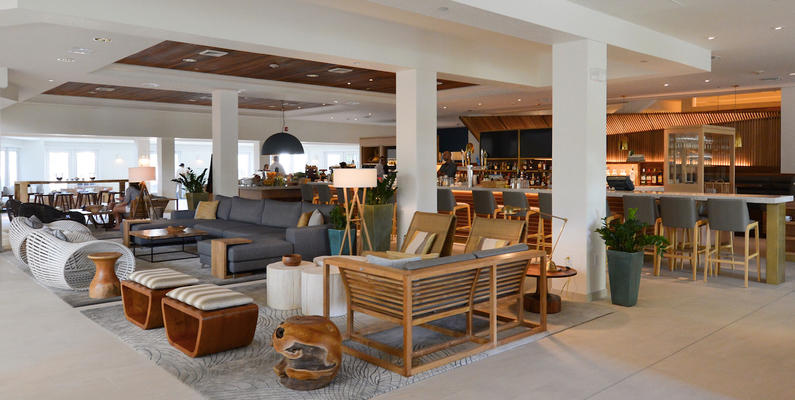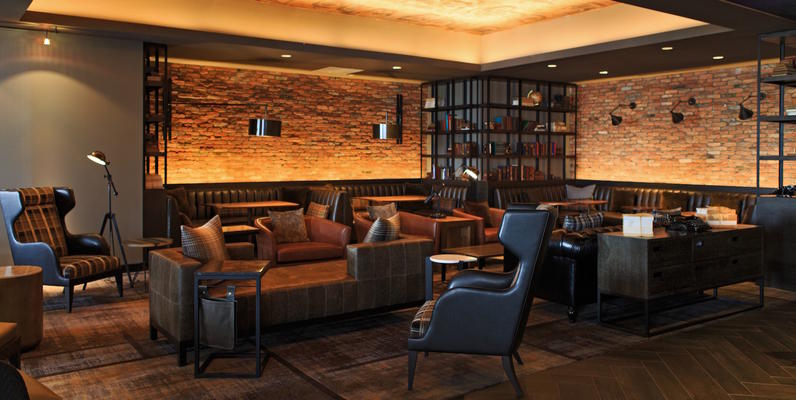04/19/2016
On Trend - Welcome to the lobby revival.
On any given night in a city near you, a crew of well heeled 30-something’s make their way to their nearest hotel lobby. They hop between luxury hotels and boutique hotels, uptown and downtown, seeking a scene to fit their mood. Designers agree that the reappearance of the Lobby as a destination is beginning to reach a fevered pitch. It's offical: lobby hopping has become the new bar hopping. To make it even more official they've been given a pet name: the "lobbyists".
75 years ago lobbies were the social core of any hotel. In a post WW2 world, the glamour faded from the lobby scene and what was left wasn’t pretty (imagine weary business travelers and tourists waiting for their luggage). Today, these hotel hubs are enjoying a revival for those traveling for work and seeking play.
The ability for the hotel lobby to act as a chameleon is the key to this trend. You can find what you want almost as fast as Uber can get you there. It’s all about instant gratification. Flexible, customizable arrangements include pods, cubbies, nooks and other types of small scale architecture that create semi-private seating or an amazing space for large groups. Everything from F&B outlets to interactive media drive the lobby scene and create interesting, memorable experiences. EDG has some experience in designing mind blowing lobbies. From technology hotspots to food and beverage to a cozy nooks to simply relax, Jason Dries-Daffner architect at EDG, shares his favorite trends in lobby design:
1. It’s a Living Room… just not your living room: For a casual night of pure relaxation, the Living Room lobby provides informal, residential nature lounge seating and groupings offering a relaxed place to hang out solo, or with business colleagues and friends. In a smaller property, the Living Room might be the whole Lobby experience. In a larger property the Living Room is often one social zone among several, including other residential elements such as the Kitchen or the Library.
2. Lead us to the kitchen: Where does everyone hang out at a dinner party? In the kitchen of course. The kitchen is the center of activity with its seductive sights, sounds and scents. A trend is emerging to feed the guest’s need for both a casual space and food. A larger property can take advantage of a Kitchen experience with culinary action stations. In addition to serving the Lounge, a great Lobby usually has a café and bar, grab- and-go and full service meal service. Food and beverage offerings are a critical component of the successful contemporary Lobby. A strong F&B program encourages guests to come to Lobby, stay for awhile and return again. Elements of such a program might include: offerings tailored to time of day, grab-and-go markets, signature dishes and drinks.
3. Hanging out in the neighborhood: Like a piazza or town square, this style of Lobby comes to life with a mix of circulation and a variety of spaces and options. Similar to a neighborhood hub, the Lobby is not just a place to go through; it is the destination in itself. Groups may occupy the center lounge while solo guests might find respite in a sidewalk café style seat along the periphery. The neighborhood lobby could come to life quietly in the early morning, growing in energy and activity through the day and into the evening, and finally tapering down to start the cycle over again.
4. A space for the Tech Savvy: In some respects, technology is driving the current renaissance of the Lobby as a destination. Mobile technology frees guests from having to plug into a wall in their guestroom or office. The blurred lines between the social and business use of technology has created a demand for more spaces where the traveler can both work and socialize. Some elements of technology that support a popular Lobby: Wi-Fi, charging outlets distributed generously and conveniently where guests want to sit, interactive screens and tables with site specific customized content, self-check-in kiosks and boarding pass printing stations.



